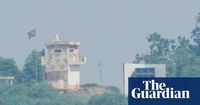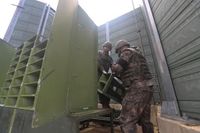On the tense and heavily fortified border that divides North and South Korea, a rare moment of de-escalation has quietly unfolded. In the days leading up to the Korean Peninsula’s Liberation Day—an annual celebration marking the end of Japanese colonial rule—both Koreas began dismantling the loudspeakers that for years had blared propaganda, pop music, and pointed messages across the demilitarized zone (DMZ). The move, confirmed by multiple sources including BBC, Korea JoongAng Daily, and The Independent, signals a cautious but notable effort to manage tensions amid shifting political winds and looming military exercises.
The South Korean Defense Ministry announced on August 4, 2025, that it had started taking down its own loudspeakers, which had been installed along the inter-Korean border. By August 5, more than 20 of these fixed devices had been dismantled, according to Korea JoongAng Daily. The action was not taken in isolation. On August 9, South Korea’s military reported that North Korean troops were observed dismantling their own propaganda loudspeakers in several locations along the front line. The Joint Chiefs of Staff in Seoul confirmed this development but stopped short of specifying the exact sites or whether the removal was comprehensive across all 40 known North Korean loudspeaker locations.
“It remains to be confirmed whether the devices have been removed across all regions,” the South Korean military stated, as reported by UPI. Nonetheless, the gesture was unmistakable: North Korea was reciprocating Seoul’s move, perhaps in a bid to keep a lid on escalating hostilities ahead of significant political events. The dismantling comes just days before President Lee Jae Myung’s anticipated Liberation Day speech and his first summit with U.S. President Donald Trump, both scheduled for later in August.
The timing is anything but accidental. According to The Independent, South Korea’s loudspeaker broadcasts had only resumed in June 2024 under the previous conservative administration of Yoon Suk Yeol, after a yearslong pause. The broadcasts, which featured everything from news bulletins to K-pop music, were designed to needle Pyongyang. The North, for its part, retaliated with its own broadcasts, often airing the howling of wild animals and other jarring sounds. These psychological warfare campaigns, relics of Cold War tactics, have long been a flashpoint for tension, especially as North Korea’s nuclear program advances and as South Korea deepens military cooperation with the United States and Japan.
But the election of Lee Jae Myung in June 2025 marked a turning point. Lee, who campaigned on improving inter-Korean relations, quickly halted South Korea’s broadcasts and began dismantling the loudspeakers. North Korea responded in kind, ceasing its own broadcasts within eight hours of Seoul’s decision on June 11, as reported by Korea JoongAng Daily. The dismantling of physical equipment, confirmed on August 9, is the latest tangible step in this tentative thaw.
Yet, the motives behind North Korea’s actions are layered and complex. Analysts cited by Korea JoongAng Daily suggest that Pyongyang’s move may have been influenced by recent adjustments to the schedule of the Ulchi Freedom Shield (UFS) combined military exercise—a large-scale annual drill conducted by South Korea and the United States. Originally slated for August 18 to 28, about half of the training events were postponed until September, officially due to extreme heat and flood recovery efforts. However, many observers believe the schedule change was also intended to avoid provoking the North.
Kim Yo-jong, the influential sister of North Korean leader Kim Jong-un, minced no words in her July 28 statement, denouncing the upcoming UFS exercise as an “invasive large-scale joint military exercise.” Her comments, published through the Korean Central News Agency but conspicuously absent from North Korea’s domestic media, underscored Pyongyang’s deep suspicion of the South’s alliance with Washington. In late July, she further rebuffed overtures by Lee’s new liberal government, arguing that Seoul’s “blind trust” in its U.S. partnership made it indistinguishable from its conservative predecessor.
Lim Eul-chul, a professor at Kyungnam University for Far Eastern Studies, told Korea JoongAng Daily, “The move appears to be a strategic choice by the North to manage tensions at a certain level. It is still focused on short-term, localized tension reduction rather than resuming dialogue or full cooperation.” This sentiment is echoed by other observers who note that, while North Korea is willing to respond selectively to the South’s peace gestures, it continues to portray South Korea as a hostile nation in its internal narrative.
The dismantling of loudspeakers is not just about silencing propaganda. It’s also about symbolism and the subtle signaling of intent—or at least of tactical patience. North Korea has not reported the dismantling in its domestic media as of August 10, according to Korea JoongAng Daily. The regime appears to be calibrating its external messaging while maintaining a hardline stance at home. Pyongyang’s focus, as noted by The Independent, seems to be shifting toward expanding ties with Russia in the context of the ongoing war in Ukraine, rather than resuming dialogue with Seoul or Washington. Kim Yo-jong’s dismissive remarks about the Trump administration’s intent to restart diplomacy on denuclearization further highlight the North’s current priorities.
Meanwhile, the South’s actions are being closely watched by its allies and adversaries alike. The removal of propaganda equipment is seen as the first concrete measure by President Lee’s government to ease friction with the North. However, the shadow of the upcoming joint U.S.-South Korea military exercises looms large. North Korea has long labeled these drills as rehearsals for invasion and has often used them as a pretext for military demonstrations and weapons tests. With the exercises set to begin on August 18, the current calm may prove fleeting.
For now, the dismantling of loudspeakers on both sides of the DMZ offers a rare, if fragile, respite from the relentless cycle of provocation and retaliation. The move has been welcomed by some as a sign of possible progress. Yet, as history has shown, the Korean Peninsula’s peace is always precarious, and even the quietest moments can quickly give way to renewed tension.
As both nations prepare for key political and military events in the weeks ahead, the world watches to see whether this latest gesture will lead to lasting change—or simply mark another brief pause in the decades-long standoff.



